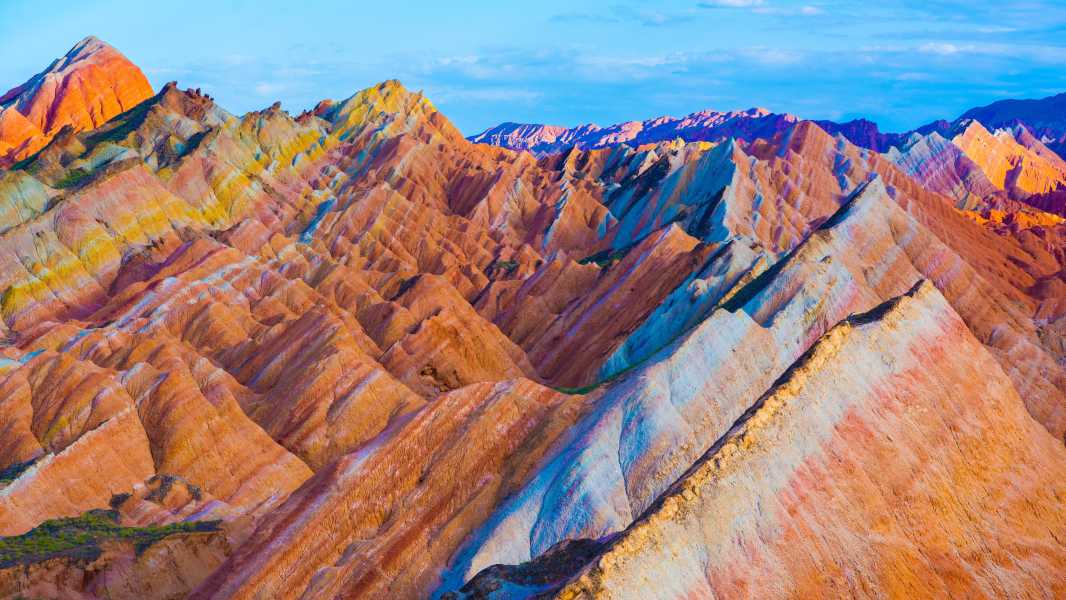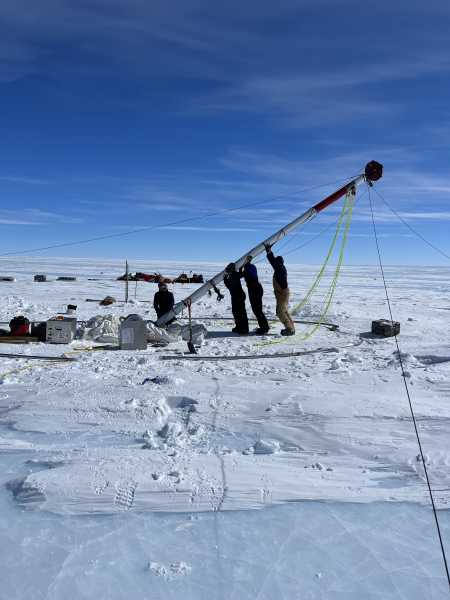
The Rainbow Mountains in China formed around the same time as the Himalayas. (Photo credit: Tom Till via Alamy)
As the name suggests, China's Rainbow Mountains are multi-colored formations in the northwest of the country. The landscape in the area is otherworldly, with bright stripes that look like they've been sprayed onto the rocks.
The Rainbow Mountains are in the foothills of the rugged Qilian Mountains and likely formed about 50 million years ago, around the same time as the Himalayas, according to NASA's Earth Observatory. The Earth, once relatively flat, was compressed and formed into a jagged landscape when the Indian tectonic plate collided with the Eurasian plate. This happened because the plates had similar rock densities, preventing either from sliding under the other to create a subduction zone, according to the U.S. Geological Survey (USGS).
However, the foundation for the rainbow pattern of the mountains was laid long before this monumental collision.
The Rainbow Mountains are made of sandstone and siltstone, sedimentary rocks that form when sand and silt, respectively, are compacted and cemented together over long periods of time. These rocks, with their bands of different colors, were deposited before the Himalayas were formed.
The bright stripes are a result of iron and other trace elements in the stone. Each stripe has a unique composition, which determines its color. For example, dark red stripes are rich in iron oxides, yellow layers contain high amounts of iron sulfide, and green stripes have more chlorite and iron silicates, according to a 2016 Forbes article.

The mountains consist of mineral-rich sandstone and siltstone.
Iron and other minerals accumulated in the rock while the grains of sand and silt were still stuck together. Groundwater circulating in the pore spaces between the grains deposited the minerals, coating each grain and further bonding the rocks.
The tilted layers we see today on the slopes of the Rainbow Mountains are inverted layers that would have remained buried and horizontal if the Indian and Eurasian plates had not collided. After the land was compressed by plate tectonics, severe erosion followed, erasing any sediment that would have hidden the bright layers. Fortunately for modern visitors, there is no vegetation to obscure the amazing rainbow patterns.
The Rainbow Mountains are a popular tourist attraction. They are protected as part of the Zhangye Danxia National Geopark, but visitors can climb to the top of the hills
Sourse: www.livescience.com





